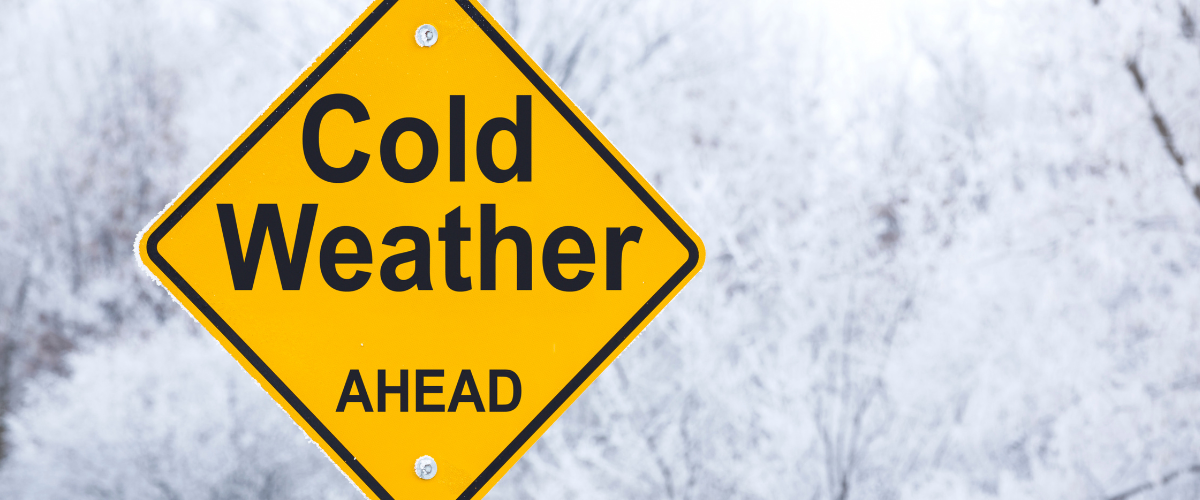Stay healthy and safe in cold weather

Colder weather is coming to South Mississippi. Stay healthy and safe with top tips for winter from the CDC.
Remember, if you fall and suffer an injury, or if you are experiencing any symptoms that cause concern, visit your nearest Walk-In Clinic. If your symptoms or injuries are severe, visit the closest Emergency Department.
Prepare your home
Staying inside is no guarantee of safety. Take these steps to keep your home safe and warm during the winter months.
- Winterize your home.
- Insulate water lines that run along exterior walls.
- Clean out gutters and repair roof leaks.
- Check your heating systems.
- Have your heating system serviced professionally to make sure that it is clean, working properly, and ventilated to the outside.
- Inspect and clean fireplaces and chimneys.
- Have a safe alternate heating source and alternate fuels available.
- If you do not have working smoke detectors, install one inside each bedroom, outside each sleeping area, and on every level of the home, including the basement. Test batteries monthly and replace them twice a year.
- Prevent carbon monoxide (CO) poisoning emergencies.
- Install a battery-operated or battery backup CO detector to alert you of the presence of the deadly, odorless, colorless gas. Check or change the battery when you change your clocks in the fall and spring.
- Learn the symptoms of CO poisoning: headache, dizziness, weakness, upset stomach, vomiting, chest pain, and confusion.
Prepare your vehicle
Get your vehicle ready for cold weather use before winter arrives.
- Service the radiator and maintain antifreeze level.
- Keep the gas tank full to avoid ice in the tank and fuel lines.
- Prepare a winter emergency kit to keep in your car in case you become stranded. The kit should include:
- Cell phone, portable charger, and extra batteries.
- Items to stay warm, such as extra hats, coats, mittens, blankets, or sleeping bags.
- Food and water.
- Booster cables, flares, tire pump, and a bag of sand or cat litter (for traction).
- Compass and maps.
- Flashlight, battery-powered radio, and extra batteries.
- First-aid kit; and
- Plastic bags (for sanitation).
Prepare for emergencies
Be prepared for weather-related emergencies, including power outages.
- Stock food that needs no cooking or refrigeration and water stored in clean containers.
- Ensure that your cell phone is fully charged.
- When planning travel, be aware of current and forecast weather conditions.
- Keep an up-to-date emergency kit, including:
- Battery-operated devices, such as a flashlight, a National Oceanic and Atmospheric Administration (NOAA) Weather Radio, and lamps.
- Extra batteries.
- First-aid kit and extra medicine.
- Baby items; and
- Cat litter or sand for icy walkways.
- Protect your family from carbon monoxide (CO).
- Keep grills, camp stoves, and generators out of the house, basement, and garage.
- Locate generators at least 20 feet from the house.
- Leave your home immediately if the CO detector sounds and call 911.
Take precautions outside
Outdoor activities can expose you to several safety hazards, but you can take these steps to prepare for them:
- Wear appropriate outdoor clothing: wear a tightly woven, preferably wind-resistant coat or jacket; inner layers of light, warm clothing; mittens; hats; scarves; and waterproof boots.
- Sprinkle cat litter or sand on icy patches.
- Learn safety precautions to follow when outdoors.
- Work slowly when doing outside chores.
- Take a buddy and an emergency kit when you are participating in outdoor recreation.
- Carry a cell phone.
Signs of hypothermia and frostbite
Victims of hypothermia are often:
- Older adults with inadequate food, clothing, or heating
- Babies sleeping in cold bedrooms
- People who remain outdoors for long periods—the homeless, hikers, hunters, etc.
- People who drink alcohol or use illicit drugs.
What are the signs and symptoms of hypothermia?
The following are warnings signs of hypothermia:
Adults:
- Shivering
- Exhaustion or feeling very tired
- Confusion
- Fumbling hands
- Memory loss
- Slurred speech
- Drowsiness
Babies:
- bright red, cold skin
- very low energy
Hypothermia is a medical emergency. If you notice any of the above signs, take the person’s temperature. If it is below 95° F, get medical attention immediately!
What is frostbite?
Frostbite is a type of injury caused by freezing. It leads to a loss of feeling and color in the areas it affects, usually extremities such as the nose, ears, cheeks, chin, fingers, and toes. Frostbite can permanently damage the body, and severe cases can lead to amputation (removing the affected body part).
Who’s most at risk?
You may have a greater chance of developing frostbite if you
- have poor blood circulation
- are not properly dressed for extremely cold temperatures
What are the signs and symptoms of frostbite?
If you notice redness or pain in any skin area, get out of the cold or protect any exposed skin—frostbite may be beginning. Any of the following signs may point to frostbite:
- A white or grayish-yellow skin area
- Skin that feels unusually firm or waxy
- Numbness
A person who has frostbite may not know they have it until someone else points it out because the frozen parts of their body are numb.
If you are not able to get medical help right away, try to warm the person up. Learn more about hypothermia and frostbite here.
Be ready to check on family and neighbors who are especially at risk from cold weather hazards: young children, older adults, and the chronically ill.
If you have pets, bring them inside. If you cannot bring them inside, provide adequate, warm shelter and unfrozen water to drink.
Be sure to visit CDC’s Winter Weather webpage for more winter weather safety tips.
